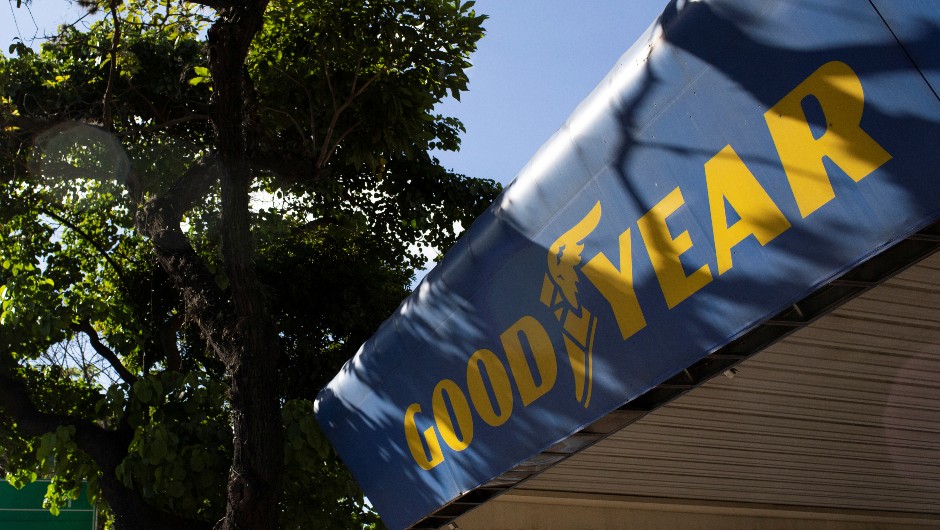
Robotics bring welcome debt relief to Goodyear

Goodyear has underscored the benefits of modern treasury technologies by embracing robotics as a way of maximising its liquidity and minimising borrowing.
Goodyear Tire & Rubber – a 63,000-employee colossus that manufactures in as many as 21 countries and sells in many more – has a capital structure that makes cash critical. Its market cap of $1.8 billion is dwarfed by long-term debt of $5.7bn, up 20% from $4.8bn at the start of the year and offset by just $1bn of cash and cash equivalents.
As a weak credit, Goodyear’s bond issues carry notably high interest rates. It pays 9.5% on a 5-year offering launched in May, for example. It paid out as much as $158m of interest in the first half of 2020, contributing to an operating loss of $1.3 billion in the same period. And that’s before factoring in last year’s actuarial losses of $3.1 billion on its vast final-salary pension fund.
In such an environment, actions by a treasury team to improve a company’s cash position take on a heightened importance. Goodyear’s innovative solution was to consolidate its daily balances on multiple accounts in nine currencies (and potentially several more), gaining an additional €10m to €20m that it can use to repay borrowing and lower interest charges while also reducing manual tasks for its treasury team in Luxembourg.
The company also considered setting up a cross-currency notional cash pool, notes Europe, Middle East and Africa (EMEA) senior manager liquidity management Rene Krack. But it believes its arrangement with Deutsche Bank’s Multi Currency Cash Concentration (MCCC) engine is a more efficient alternative.
For one thing, it does not require Goodyear to consolidate its many accounts in the region. Moreover, it copes with these being held with more than one bank.
“Typically, banks offering a notional pooling solution with full offset would require the currency accounts to be maintained in a single location. One of the unique aspects of this solution – and one that was very beneficial for us – is that they allowed us the flexibility to re-use existing foreign currency accounts that are maintained in multiple locations,” Krack notes.
The company’s EMEA bank accounts include six in US dollars and three each in Polish zloty and sterling. Moreover, its accounts in the region are with two banks – its main provider Deutsche and a separate Nordic house for its Danish, Norwegian and Swedish banking (including same-day zero-balancing cash pools).
Goodyear particularly wanted to retain these to be able to continue making local payments from them. Balance sheet considerations also played a role.
As the foreign currency accounts are with different Deutsche branches, plus the Nordic house, Goodyear was uncertain if it could net its positive balances against negative balances under a notional pool. Failure on this point would have pushed up both its cash and – crucially – its debt, Krack notes.
Instead, the MCCC engine allows it to eliminate cash and debt positions on the currency accounts, which usually remain under a notional pool. It does this via overnight swaps, though it could also use swaps to specific future dates, according to Krack.
Accelerating automation
The arrangement brings a new level of automation to Goodyear’s European cash management. Having already established master accounts to concentrate end-of-day cash in each of its EMEA currencies, Goodyear’s refinement now largely automates overnight FX conversion into Euros through Deutsche’s MCCC (for which the bank did the coding and programming in-house without third-party assistance).
Every day the system generates potential overnight swaps out of US dollars, sterling and Swiss francs, plus two trios of Scandinavian (Danish and Norwegian kroner, Swedish kronor) and central European (Czech koruna, Hungarian forints, Polish zloty) currencies.
These come in several waves during the day. This is because four different daily cut-off times operate for the currencies in the arrangement.
“Perhaps the most ground-breaking aspect is the innovative combination of cross-currency liquidity with robotics technology. While workflow automation is rising in prominence within the industry, this is a truly unique approach,” believes Raf Monnens, EMEA treasurer at Goodyear.
Finding efficiencies
This “has allowed us to improve operational efficiencies, reduce operational risk and free up capacity within our team – all while unlocking a significant amount of additional liquidity,” he argues.
Besides saving interest by driving its debt balance down by an average €15m each day, the BB minus-rated company estimates that it is saving one person-hour per day though automatic balance calculation and less currency trading to manage small balances.
Note, though, that Goodyear has opted to manually approve the transactions that Deutsche’s engine delivers. Although it could have fully automated the process, it prefers the flexibility (at the price of more human involvement) of being able to “pull the lever ourselves”, as Krack puts it. The reason we are approving the trades manually is that the accounts we built the solution on, are Treasury accounts and we want to make sure all transactions are covered (including the ones that are not yet shown by MT942 at the cut-off time)
Although he acknowledges that “sometimes it is not easy to handle the different cut-off times to approve trades in the system”, Krack regards the arrangement as a “very lean process” overall: “everything is automated and we don’t have to do any accounting”, thanks to Deutsche providing a specific reference on the MT940 Swift message on each transaction.
Further refinement
Now that its structure is up and running, the company is also looking to add further regional currencies. Currently it is seeking to bring its Bulgarian leva and Romanian leu balances into the arrangement.
Goodyear could also add other regions, though this seems unlikely to include its US domestic operation. “By implementing the solution we already covered the majority of the opportunities,” Krack judges.
All the same, as a global company it sees scope to expand the arrangement further. “It may well happen that we add and finetune in other regions,” he adds.